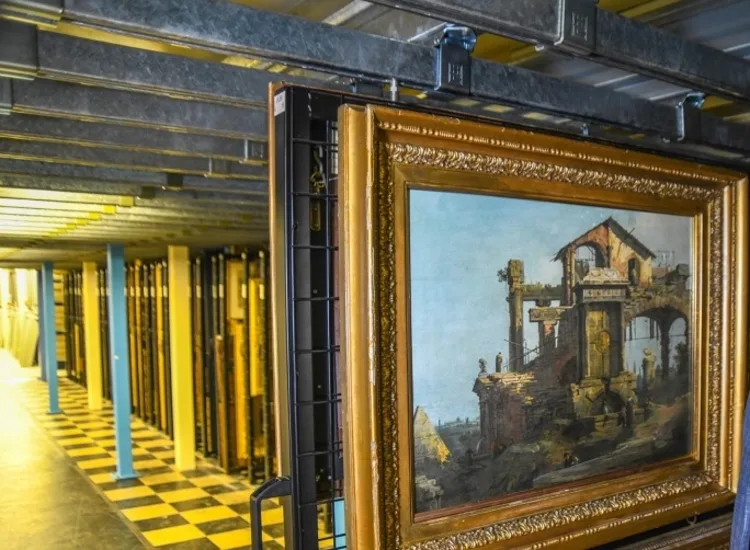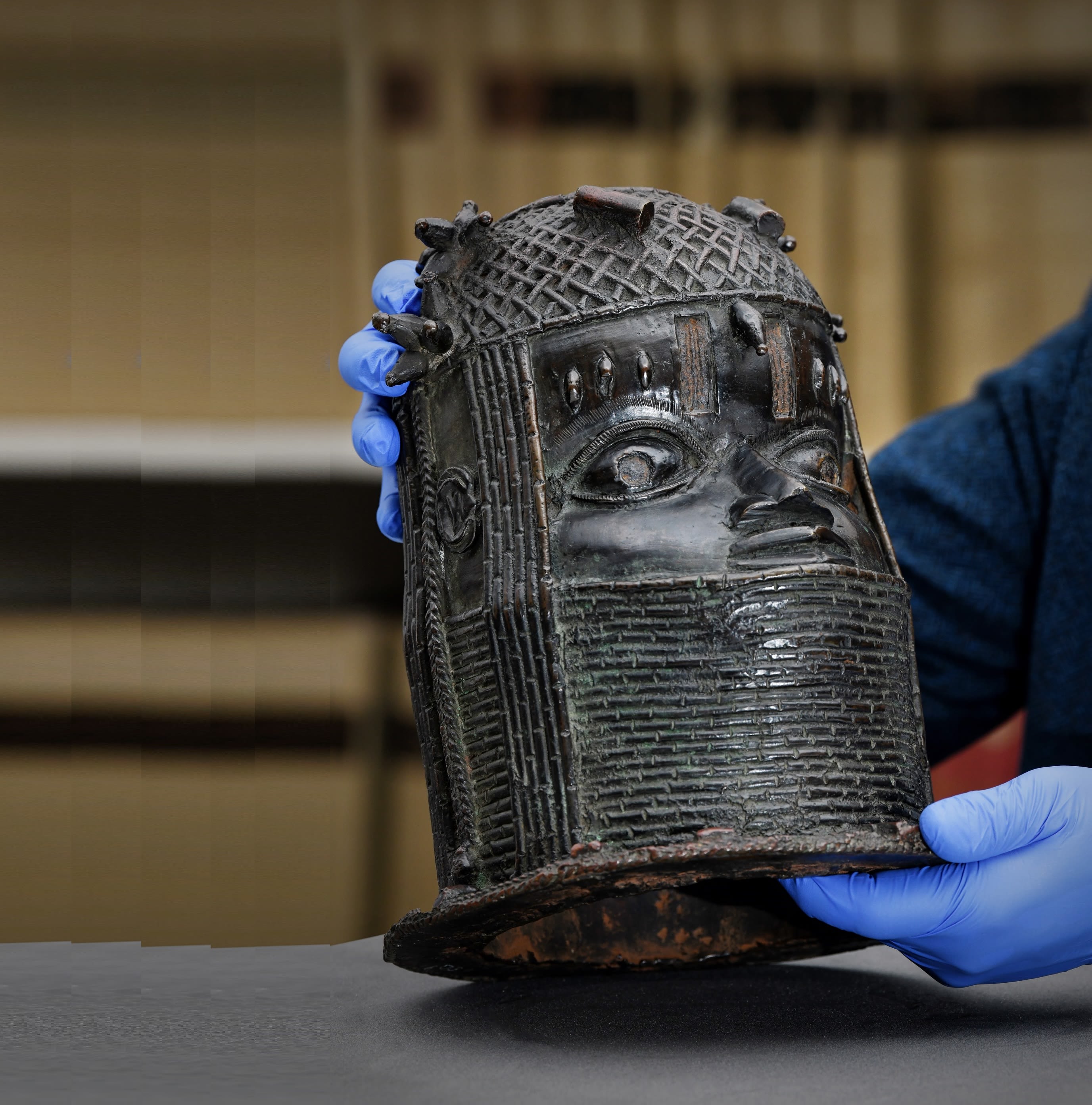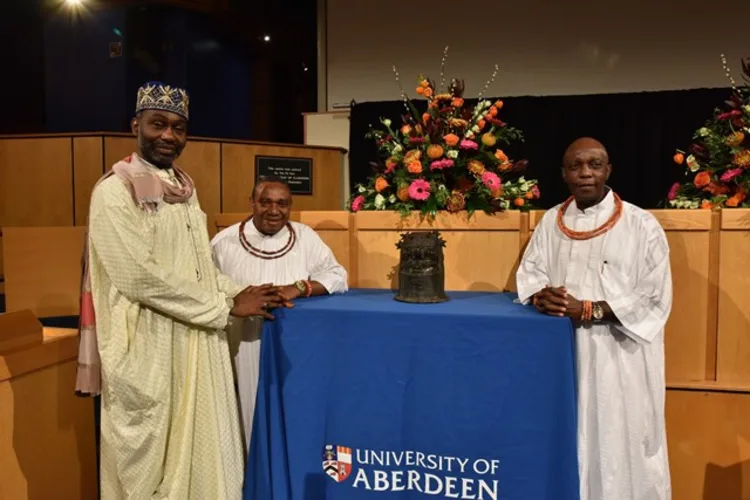Empire, Slavery and Scotland’s Museums

A group set up to consider how Scottish museums tell the story of the country’s colonial past has now shared its findings with the Scottish Government.
Panel member Abeer Eladany, a curatorial assistant at the University of Aberdeen, and the University of Aberdeen’s Head of Museums and Special Collections, Neil Curtis, reflect on how museum collections and spaces can better recognise and address Scotland’s complex imperial, colonial, and slavery histories.
The publication of a new set of guidelines for Scotland’s museums and collections is a significant milestone. The recommendations present a positive step for Scotland to recognise and address the reality that for more than two centuries, its economy was closely tied to imperial trade and conquest, including the enslavement of people.
Glasgow’s trade in sugar, cotton and tobacco grown by enslaved people in North American and the Caribbean underpinned investment in heavy industry that saw the city boast of being the ‘Second City of Empire’.
Likewise, wealth from the ownership of plantations – and enslaved people – flowed into the lands of Highland and North-eastern lairds, and institutions like the ancient universities, while the Clearances saw people settling in lands that had been seized from indigenous people in Canada. Scotland’s involvement in the East India Company was substantial, but is often overlooked.
New research is showing the impact of the money that flowed back from India, while New Scots whose ancestors came from India and Pakistan were equally important parts of the story that needs telling.
For those people working in dangerous and poorly paid industry or who were cleared from their traditional lands in the Highlands. just as for those who were enslaved or colonised, Empire brought little in the way of benefits, but for everyone the impact was immense. Any truthful presentation of Scottish history has to include their lives as a key element of the story.
However, not only are there so many Scots whose family history is tightly bound up with the histories of slavery and colonialism, but there are insidious legacies of the racist and prejudiced views that underpinned the brutality and exploitation of people in the past.
These persist today and blight so many lives. Addressing these legacies is therefore not just about telling truthful stories about Scotland’s history, it is also about deciding what kind of society we want to live in today.


Museums have crucial part to play – as curators of the evidence, and as places for people to understand each other and their overlapping stories – so becoming spaces for truth and healing.
The work of the Empire, Slavery & Scotland's Museums project was led by a steering group which, as well as bringing professional and academic expertise, included people who understand how racism looks and manifests in our institutions. Its discussions benefitted from a series of working groups which drew further on expertise across the sector and – crucially - also sought the views of the public through a national consultation of workshops, focus groups, commissioned research and the biggest survey of attitudes to museums and race conducted in Scotland.
As the report says, this needs to continue so that museums are shaped through co-production, promoting cultural democracy and participation for all.
The project was able to draw on many examples of good practice including exhibitions that have shared the results of recent research to reveal forgotten stories.
An Aberdeen example of this was an exhibition on the discovery of a painting by Canaletto, which also told the equally fascinating - and disturbing - story of how wealth originating in the labour of enslaved people brought the painting to Aberdeen. Sometimes, research will reveal that the acquisition of items was the direct result of violence and theft.
This was the story of a Benin Bronze in the University’s collection that had been looted from Benin City in 1897, so was returned to Nigeria last year. Both these examples underline how addressing the legacies of slavery and colonialism is not just about understanding what happened in the past, but acting on the truth and engaging with people today.
Key to this is working with the full range of people, both to give a more truthful story and to ensure that everyone has a stake in what museums are doing. By only telling a partial story – using only the exploits of ‘Great White Men’ – museums have not been truthful. By excluding the lives of people who do not identify with that dominant story, they have also excluded those people as visitors or as people who work in museums and so driving a vicious cycle of ignorance and exclusion.
As the report makes clear, museums will need to work hard to become more representative of wider society, working together with previously marginalised people to gain their trust by including their knowledge to co-create exhibitions and events. Addressing racism within our society, and within our museums, is essential.
Museums also need to look again at their collections. A new project, funded by Museums Galleries Scotland, will be reviewing the African and Caribbean collections in Scottish museums and building links with museums in Africa and with people of African descent. It will start with the collections in National Museums Scotland, Glasgow Museums and the Universities of Aberdeen and Glasgow. We can then think about how to better use those collections, which items should be returned, and which new items should be collected to more accurately reflect Scotland’s relations with Africa and the Caribbean.



While the report recommends that a dedicated space be developed to address the experiences of empire, colonialism and historic slavery, it also emphasises that this is something that needs to be addressed in museums across the country. Scotland is so varied that one single story would not be enough. We hope that Scotland’s museums can make the fundamental changes suggested in the recommendations, based on human rights, and lead society in addressing untruthfulness and prejudice.

Abeer Eladany (third from left) with the Empire, Slavery & Scotland's Museums steering group
Abeer Eladany (third from left) with the Empire, Slavery & Scotland's Museums steering group
